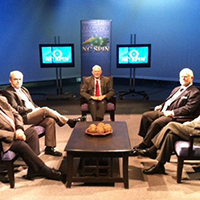Supreme Court can rule on campaign contributions
Published October 7, 2013
by George Will, Washington Post Writers Group, reprinted in News and Observer, October 6, 2013.
The Supreme Court must feel as though it is plowing an ocean as it repeatedly reminds Congress that the anodyne label “campaign finance reform” can encompass a multitude of sins. Come Tuesday, the court will have another occasion to consider that not all regulations of the indispensable means of disseminating political speech – money – are constitutional just because they are presented as means of preventing corruption or its “appearance.”
By siding with Shaun McCutcheon, a conservative Alabama entrepreneur, the court can continue rescuing the freedoms of political speech and association from abridgements written by, and for, the political class. At issue are the aggregate limits on individuals’ political contributions.
McCutcheon is not attacking the “base limits” that restrict individuals to giving $2,600 per election to any candidate’s campaign. Congress has divined, without apparent reliance on any empirical evidence, that this is the sum above which corruption or its appearance occurs. The sum is, for incumbent lawmakers, conveniently low: It especially burdens candidates challenging incumbents, who have fundraising and other advantages.
McCutcheon is contesting the $48,600 limit on the aggregate amount individuals can contribute to candidates over a two-year span (and aggregate limits on contributions to party committees and PACs). The illogic of aggregate limits is glaring: He could give $2,600 – which Congress considers innocuous – to 18 candidates without an appearance of corruption, but $2,600 to the 19th would somehow trigger the appearance. If in 2006 he had wanted to contribute to one candidate in all 468 federal races (435 House, 33 Senate) he would have been limited to $85.47 per candidate.
Congress, not content with having decided – no one knows how – how much is too much to give to a candidate, has decided how many candidates are too many candidates to support. Incumbents have an incentive to limit challengers’ resources by insisting – without enunciating a standard or principle – that there is “too much” money in politics. Incumbent protection is also served by a similar standardless decree that 19 is “too many” candidates to receive $2,600 contributions that Congress approves.
Democratic politics is a promise-making, transactional business: Vote for me, support me and, if elected, I will do some things for you in favor. The court has held that an elected official’s gratitude is not corruption. But when the court allows the political class to restrict political activity because of the appearance of corruption, without any evidentiary requirement, it allows that class to write restrictions based not on actual quid pro quo corruption – which already is illegal – but on mere conjecture.
Worse, it allows proponents of campaign restrictions to concoct the appearance of corruption merely by alleging it. Hence such restrictions, written by persons with a stake in the rules of political competition, have themselves a prima facie appearance of corruption.
The government’s brief defending the aggregate limits cites no instance of actual corruption associated with large aggregate contributions. And Bradley Smith, chairman of the Center for Competitive Politics, notes that confidence in government is lower today than in 1974, until which there were no federal limits – base or aggregate – on contributions by individuals to candidates or parties.
The original rationale for aggregate limits was to prevent the circumvention of per-candidate limits by the funneling of large sums to candidates through entities and maneuvers that have subsequently been outlawed. Therefore, no rationale remains for the “aggregate limits” burden on the individual’s rights of political expression and association.
Such limits cannot withstand the court’s standard of heightened scrutiny.
The court has been permissive – too much so – in allowing incumbent legislators to decree the extent to which an individual can support an individual candidate. There is no remaining reason to permit incumbents to stipulate how many candidates can receive contributions of a size that Congress itself has deemed innocuous. So, deference to that congressional judgment now requires repudiating Congress’ imposition of aggregate limits.
The aggregate limits certainly look like the kind of corruption called self-dealing. It may not be this, but it certainly has this appearance.
October 7, 2013 at 9:28 am
Richard Bunce says:
Voluntary donations and spending to/by political campaigns has never been the issue... candidates buying votes with promises of government services paid for by someone else and voters making poor choices in the candidates they vote for is the issue but you will never see elected officials make those points as they will do anything to get elected.
For instance 10% of voters approve of Congress yet 90% of Congress members are re-elected every two years.







